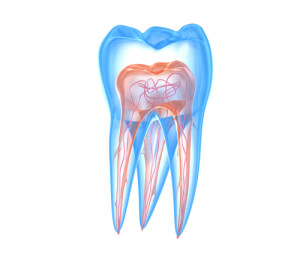Information Library
Start Reading

To better understand endodontic treatment and the need for retreatment, it is helpful to have a foundational understanding of what endodontic treatment entails.
The word endodontics comes from the Greek; “endo” means “inside” and “odont” is Greek for tooth. Quite literally, endodontics has everything to do with the inside of your tooth. Dental pulp, the inside of the tooth, is comprised of a vast network of nerves, which are interconnected with other parts of the mouth. When you experience tooth pain, it could be due to a variety of conditions, from an abscess to a cracked tooth or a cavity.
The job of your endodontist is to save a diseased tooth and alleviate as much pain as possible. Root canal therapy is used to remove diseased pulp tissue and cover the tooth with a filling or crown to prevent future problems.
Whether you have had a traumatic accident or are suffering from toothache, an endodontist can diagnose and isolate the problem. One of the most common procedures an endodontist will perform is a root canal treatment. Root canal treatment becomes necessary when the tooth pulp is inflamed or infected. The compromised pulp will need to be removed in order to save your natural tooth. There are five major steps in endodontic treatment protocol your endodontist will typically follow:

Endodontic treatment recovery should only take a few days until there is no remaining pain. If pain continues or re-surfaces, this may indicate the need for retreatment.
Most of the time, root canal treatment lasts a lifetime. However, it is possible for teeth to heal improperly and become diseased again, months or even years after treatment. The good news is that a retreatment procedure can be used to save your tooth again. You may need retreatment for any number of reasons:
Root canal treatment and retreatment are relatively similar in terms of procedural steps. Retreatment takes place because of a complication following the initial procedure. During your retreatment, your endodontist will remove and attempt to restore your canal filling. In either case, endodontic treatment time usually takes between 19 and 55 minutes, with most procedures lasting about 33 minutes.
Sometimes, retreatment is necessary and unavoidable. If you’re experiencing pain again in the same tooth where you had root canal therapy, all is not lost. Retreatment is successful for many patients, which is why it’s worth seeking before deciding to have your tooth extracted. An endodontist can assess the causes of your pain and offer the best solutions for long-term dental health. To make an appointment with one of our trusted Penn endodontists, please call our office at 215-898-8965.